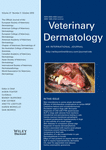Journal list menu
Export Citations
Download PDFs
Issue Information
Announcement
News Item ― 8th World Congress of Veterinary Dermatology
- Page: 331
- First Published: 12 September 2016
Scientific Papers
Bacterial skin diseases
The skin microbiome in allergen-induced canine atopic dermatitis
- Pages: 332-e82
- First Published: 03 August 2016
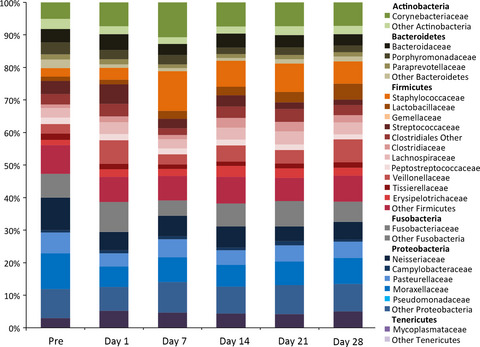
Background– Studies focusing on next-generation sequencing of the bacterial 16S rRNA gene have allowed detailed surveys of skin bacterial populations (microbiota) of the skin. Hypothesis/objectives– This study evaluated temporal changes in the skin microbiota in a canine model of atopic dermatitis. Conclusions and clinical importance– This study demonstrates that an allergen challenge in sensitized dogs leads to bacterial dysbiosis with increased abundance of S. pseudintermedius at the site of lesion induction.
Interaction of chlorhexidine with trisEDTA or miconazole in vitro against canine meticillin-resistant and -susceptible Staphylococcus pseudintermedius isolates from two UK regions
- Pages: 340-e84
- First Published: 13 July 2016
Background - Topical therapy is an important alternative to systemic antibacterial therapy for treatment of canine superficial pyoderma in light of the emergence of multidrug-resistant staphylococci. Chlorhexidine is widely used in shampoo products alone or in combination with miconazole or tromethamine-ethylenediaminetetraacetic acid (trisEDTA). Comparisons of these combinations have not been made. Hypothesis/Objectives - To determine minimum inhibitory concentrations (MICs) of combinations of chlorhexidine/miconazole and chlorhexidine/trisEDTA in vitro in a collection of Staphylococcus pseudintermedius (SP) from northern (NUK) and southeastern (SEUK) United Kingdom (UK) sources. Conclusions and Clinical Importance - These low MICs are likely to be exceeded by topical therapy. Evaluation of the mechanisms by which chlorhexidine combinations interact to reduce MICs is warranted, in view of increasing concerns of biocide tolerance in staphylococci.
Fungal and algal skin diseases
Retrospective analysis of cutaneous lesions in 23 canine and 17 feline cases of coccidioidomycosis seen in Arizona, USA (2009–2015)
- Pages: 346-e87
- First Published: 10 July 2016
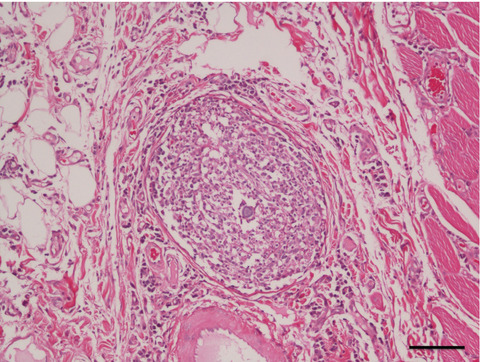
Background - Coccidioidomycosis is a fungal disease caused by the dimorphic saprophytic fungus Coccidioides immitis or C. posadasii. Primary pulmonary infection can disseminate to cutaneous and subcutaneous tissues, or less commonly direct cutaneous inoculation may occur. Hypothesis/Objectives - To characterize the historical, clinical, diagnostic and treatment findings in dogs and cats with cutaneous manifestation of coccidioidomycosis. Conclusions and clinical importance - Coccidioidomycosis is the most common mycosis of dogs and cats in endemic regions and cutaneous signs of the disease may be an initial presenting complaint. This study identified a variety of cutaneous manifestations of the disease in dogs and cats and should be recognized by clinicians.
Parasitic skin disease
Efficacy of fluralaner in 17 dogs with sarcoptic mange
- Pages: 353-e88
- First Published: 11 August 2016
Background – There are few licensed options for the treatment of canine sarcoptic mange. Objective – To evaluate the efficacy of fluralaner in dogs with sarcoptic mange infestation. Conclusion – Fluralaner was effective in eliminating scabies mites within 14 days and significantly resolved the clinical signs associated with sarcoptic mange within 21 days after a single dose.
Hypersensitivity disorders
Prospective pilot study to detect dogs with non food-induced canine atopic dermatitis using Fourier transform infrared spectroscopy
- Pages: 356-e89
- First Published: 08 August 2016
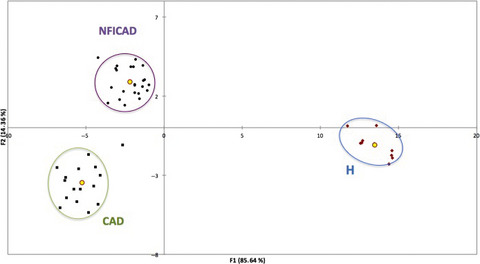
Background – The diagnosis of canine atopic dermatitis (CAD) remains challenging due to the lack of a simple biomarker or metabolic profile. In human medicine, Fourier transform infrared spectroscopy (FTIR) is an analytical technique used for several diseases. It requires a small amount of sample and allows the identification of structural moieties of biomolecules on the basis of their infrared absorption, with limited sample pretreatment. Hypothesis/Objectives – The aim of the study was to evaluate the diagnostic value of FTIR. Conclusions – A study on a larger cohort including common pruritic skin diseases is necessary to confirm these initial results and the relevance of this diagnostic technique.
A double blind, randomized, placebo controlled trial of the efficacy, quality of life and safety of food allergen-specific sublingual immunotherapy in client owned dogs with adverse food reactions: a small pilot study
- Pages: 361-e91
- First Published: 18 July 2016
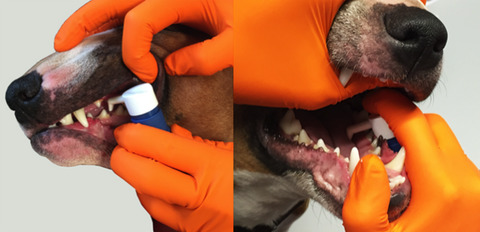
Background - Food allergen-specific sublingual immunotherapy (FA-SLIT) has emerged as a novel and successful approach for desensitizing human patients to specific food allergens. It has not been tested in dogs. Objective - To investigate the efficacy, quality of life (QoL), tolerability and safety of FA-SLIT in dogs with adverse food reactions (AFR). Conclusions and clinical importance - FA-SLIT was effective, well tolerated and safe. No severe adverse events were recorded; erythema and pruritus were reported in association with only 0.7% of the dispensed doses. Larger clinical trials with more extended maintenance immunotherapy periods will be needed to provide more precise estimates of efficacy and frequency of adverse events.
Comparison of intradermal and percutaneous testing to histamine, saline and nine allergens in healthy adult cats
- Pages: 370-e92
- First Published: 20 June 2016
Background – Intradermal testing (IDT) in cats has potential limitations; this has led to an interest in novel testing methods. A pilot study demonstrated that healthy cats produced reliable percutaneous glycerinated (PG) histamine wheals, whereas percutaneously applied glycerosaline did not lead to wheal formation. Hypothesis/Objective – The purpose of this study was to determine if percutaneously applied aqueous and glycerinated allergens would lead to irritant reactions in healthy cats. Conclusions and Clinical Importance – Percutaneously (PCT) applied allergens did not cause irritant reactions in healthy cats. PG histamine wheals, although smaller than ID histamine wheals, were easily recognizable and PCT was simple to perform.
Autoimmune and immune-mediated dermatoses
Mucous membrane pemphigoid in dogs: a retrospective study of 16 new cases
- Pages: 376-e94
- First Published: 28 June 2016
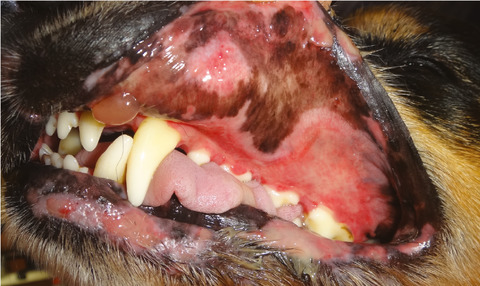
Background– Mucous membrane pemphigoid (MMP) is a chronic autoimmune subepidermal blistering disease of dogs, cats and humans. Objectives– The goal of this study was to describe the clinical, histological and immunological features and treatment outcomes of canine MMP. Conclusions and clinical importance– Canine MMP is a chronic and relapsing disease requiring a long-term treatment. Combination therapy is often needed to achieve CR.
Keratinization defects
Localized parakeratotic hyperkeratosis in sixteen Boston terrier dogs
- Pages: 384-e96
- First Published: 12 September 2016
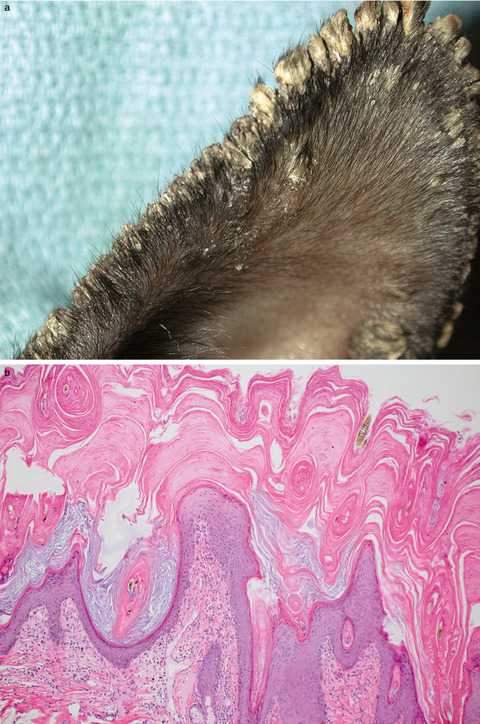
Background – Although zinc responsive dermatosis is typically a disorder of Arctic breed dogs, this study identifies similar cutaneous lesions on the face and pressure points of Boston terrier dogs. Hypothesis/Objectives – To document the clinical and histological features of localized parakeratotic hyperkeratosis of Boston terrier dogs, to determine if the lesions respond to zinc supplementation and to determine whether tissue zinc levels were decreased in affected versus unaffected dogs. Conclusions and clinical importance – To the best of the authors' knowledge this is the first report of localized parakeratotic hyperkeratosis in Boston terrier dogs, some of which improved with oral zinc supplementation. Prospective studies in Boston terrier dogs are warranted to document potential zinc deficiency (serum and/or tissue levels, pre- and post-treatment) and to objectively assess response to zinc supplementation and other therapies.
Diseases of Eyelids, Claws, Anal Sacs, and Ears
In vitro antimicrobial activity of a gel containing antimicrobial peptide AMP2041, chlorhexidine digluconate and Tris-EDTA on clinical isolates of Pseudomonas aeruginosa from canine otitis
- Pages: 391-e98
- First Published: 21 August 2016
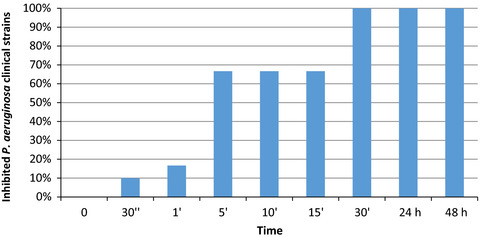
Background– Pseudomonas aeruginosa (PA) may cause suppurative otitis externa with severe inflammation and ulceration in dogs. Multidrug resistance is commonly reported for this organism, creating a difficult therapeutic challenge. Objective– The aim of this study was to evaluate the in vitro antimicrobial activity of a gel containing 0.5 µg/mL of antimicrobial peptide AMP2041, 0.07% chlorhexidine digluconate (CLX), 0.4% Tris and 0.1% EDTA on 30 clinical isolates of PA from canine otitis externa. Conclusion– This gel has shown rapid, complete and long-lasting activity against a panel of 30 PA isolates from cases of canine otitis externa.
Dermatoses of exotic small mammals
Skin diseases in companion guinea pigs (Cavia porcellus): a retrospective study of 293 cases seen at the Veterinary Medical Teaching Hospital, University of California at Davis (1990–2015)
- Pages: 395-e100
- First Published: 20 June 2016

Background – Guinea pigs (Cavia porcellus) are popular companion animals with reported skin diseases, but most reports are accessed from textbooks or review articles. Hypothesis/Objectives – To document skin diseases and their prevalence in companion guinea pigs in northern California, USA and to investigate predilections for the most common conditions over a 25 year period. Conclusions and clinical importance – Cutaneous conditions in companion guinea pigs in the USA are common. Clinicians should include a dermatological examination when examining these rodents regardless of the reason for presentation.
Equine
Diagnostic performance of molecular and conventional methods for identification of dermatophyte species from clinically infected Arabian horses in Egypt
- Pages: 401-e102
- First Published: 22 August 2016
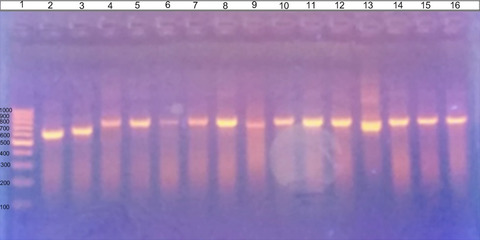
Background–Rapid and accurate identification of dermatophytes is crucial for the effective control of disease outbreaks. Current methods based on culture and microscopic characteristics may require weeks before positive identification is made. Objectives–To (i) identify the most common pathogenic dermatophytes affecting Arabian horses; (ii) compare the performance of direct microscopy (DM), culture, PCR using hair samples (PCRhair) and PCR based on culture isolates (PCRculture) for the diagnosis of dermatophytosis. Conclusions–The dermatophytes M. canis, T. verrucosum, T. mentagrophytes var. mentagrophytes and M. equinum were the most common cause of dermatophytosis in Arabian horses. Although the number of samples was small, the ITS-based PCR may be a useful diagnostic tool when combined with culture.
Factors associated with equine aural plaque in Brazil
- Pages: 408-e104
- First Published: 14 July 2016
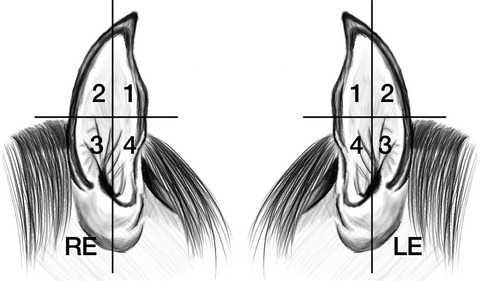
Background– Aural plaques can be found on the inner surfaces of one or both ears of horses. Despite their low malignancy, these lesions can sometimes cause discomfort and sensitivity in horses, and a loss in commercial value due to their aesthetic effect. There has been a study describing the epidemiological features and the clinical prevalence of equine aural plaques in Brazil. Hypothesis/Objectives– The aim of this study was to determine the clinical prevalence and selected associated factors of aural plaques. Conclusions– The findings confirm the extensive distribution of this disease in Brazil and its association with several management factors.
Reptiles
Clinical and histological findings of cutaneous wound healing in the red-eared slider turtle (Trachemys scripta elegans) housed in unheated outdoor enclosures
- Pages: 413-e106
- First Published: 20 June 2016
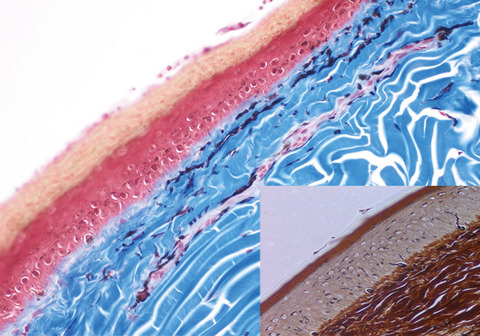
Background - Cutaneous wounds are common in chelonians. The clinical and histological features of wound healing in these species are not well described and this prevents evaluation of new therapies. Objectives - To describe clinical and histopathological features of cutaneous wound healing in the red-eared slider turtle (Trachemys scripta elegans). Conclusions and clinical importance - Second intention wound healing progressed slowly and with an indolent behaviour. Microscopically there was marked overlapping of the inflammatory and proliferative phases over a long time period.
Brief Communications
Lynxacarus radovskyi mites in feral cats: a study of diagnostic methods, preferential body locations, co-infestations and prevalence
- Pages: 425-e108
- First Published: 05 July 2016
Background – Lynxacarus radovskyi (fur mites) are ectoparasites found on the hair shafts of cats living in tropical environments. Diagnosis is via microscopic examination of hairs. Various anatomical areas have been reported to harbour these mites. Objectives – To assess adhesive tape impressions and trichograms for detecting L. radovskyi and co-infestations; to determine host body predilection sites and affected gender; to determine prevalence of L. radovskyi in a feral cat population. Conclusions and clinical importance – Tape impressions were easier to perform and identified more L. radovskyi positive cats and more co-infestations. Hairs from the perianal area and other caudal body sites are most likely to harbour L. radovskyi. Within this feral cat population, L. radovskyi was a common infestation.
Measurement of transepidermal water loss (TEWL) in cats with experimental skin barrier dysfunction using a closed chamber system
- Pages: 428-e110
- First Published: 05 August 2016

Background - A closed chamber evaporimeter is suitable for measuring transepidermal water loss (TEWL) in cats because of the compact device size, tolerance to sudden movement and short measuring time. TEWL is a representative parameter for skin barrier dysfunction, which is one of the clinical signs of atopic dermatitis in humans and dogs. Measurement of feline TEWL has been reported, but applicability of this parameter has not been validated. Hypothesis/Objectives - The aims of this study were to determine if tape stripping is a valid experimental model in cats for studying TEWL and to determine if a closed chambered system is a suitable measurement tool for cats. Conclusions and clinical importance - Feline TEWL was shown to reflect changes in the skin barrier in an experimental model using a closed chamber system and has the potential for evaluating skin barrier function in cats with skin diseases.
RT-qPCR for the diagnosis of dermatophilosis in horses
- Pages: 431-e112
- First Published: 03 August 2016
Background Dermatophilus congolensis causes a crusting dermatitis that affects horses. Diagnosis requires the identification of the organism with cytological evaluation of crust samples. This method can lack sensitivity in chronic cases. Hypothesis/Objectives To develop a probe-based real time quantitative polymerase chain reaction (RT-qPCR) test to assist with the diagnosis of dermatophilosis in horses. Conclusion Results of this study show that RT-qPCR may be a more sensitive and easier method than cytological evaluation for the diagnosis of dermatophilosis in horses.
Orf virus interleukin-10 and vascular endothelial growth factor-E modulate gene expression in cultured equine dermal fibroblasts
- Pages: 434-e114
- First Published: 22 August 2016
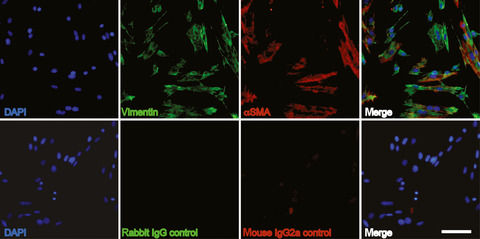
Background – Wounds in horses often exhibit sustained inflammation and inefficient vascularization, leading to excessive fibrosis and clinical complications like “proud flesh”. Orf virus-derived proteins, vascular endothelial growth factor (VEGF)-E and interleukin (ovIL)-10, enhance angiogenesis and control inflammation and fibrosis in skin wounds of laboratory animals. Hypothesis/Objectives – The study aimed to determine if equine dermal cells respond to VEGF-E and ovIL-10. Equine dermal cells are expected to express VEGF and IL-10 receptors, so viral protein treatment is likely to alter cellular gene expression and behaviour in a manner conducive to healing. Conclusions and clinical importance – This study shows that VEGF-E and ovIL-10 are active on equine dermal cells and exert anti-inflammatory and anti-fibrotic effects that may enhance skin wound healing in horses.
Case Reports
First report of angio-oedema subsequent to the administration of allergen specific sublingual immunotherapy for the management of equine hypersensitivity dermatitis
- Pages: 439-e115
- First Published: 28 June 2016
Background – Sublingual immunotherapy (SLIT) offers an alternative mode of allergen delivery to subcutaneous immunotherapy (SCIT) with the aim of inducing immunological tolerance. Currently, there are no published reports regarding the efficacy or safety of SLIT in horses. Hypothesis/Objective – To describe the first case of several adverse events occurring in a horse subsequent to the repeat administration of SLIT. Conclusions and clinical – importance To the best of the authors’ knowledge, this is the first reported case of adverse reactions developing subsequent to the administration of SLIT for the management of EHD.
Carbon dioxide laser treatment of extensive pigmented viral plaque lesions in a golden retriever dog
- Pages: 442-e117
- First Published: 26 June 2016
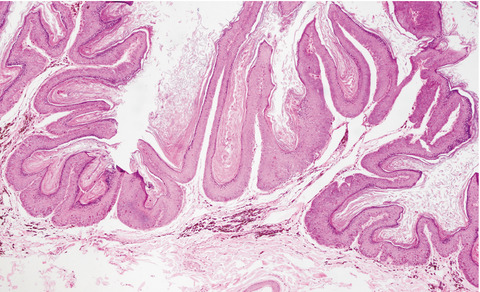
Background– Canine pigmented viral plaque (PVP) is an uncommon skin disease, associated with papillomavirus infection. Lesions are usually small (<1 cm diameter), pigmented macules to plaques on the ventral abdomen and medial thigh. Conclusions and clinical importance– Extensive PVPs have not previously been described in a golden retriever dog or previously reported to cause pruritus in dogs. Due to the large skin area involved, surgical excision was not feasible in this case. However, two rounds of treatment using laser were completely curative for both focal pedunculated and plaque-like PVP lesions. Additionally, compared to surgical excision, laser treatment is expected to result in less postoperative discomfort, reduced surgery time and fewer postoperative infections. This is the first report of successful treatment of canine PVPs using a CO2 laser. The success of this treatment in this case suggests that laser provides an excellent treatment option for extensive PVPs in dogs.
Canine eosinophilic granuloma of the digits treated with prednisolone and chlorambucil
- Pages: 446-e119
- First Published: 03 July 2016
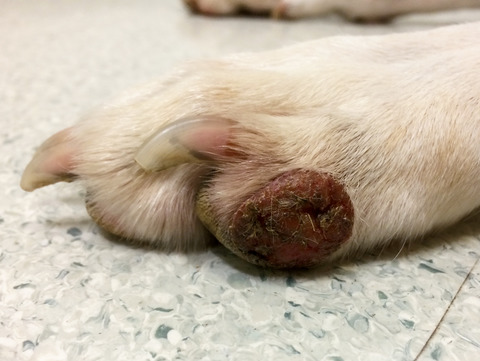
Background - Canine eosinophilic granuloma (CEG) is an uncommon disease. Lesions are typically located in the oral cavity and other cutaneous sites but are rarely reported to affect the digits. The majority of cases are treated with prednisolone as a monotherapy; alternative treatment options include corticosteroids administered in combination with azathioprine, antihistamines, electrochemotherapy with bleomycin, and surgical resection. Neither chlorambucil nor laser have previously been reported as treatments. Objectives - To describe an alternative therapy for treatment of CEG; using chlorambucil in combination with prednisolone for those cases that fail to respond to prednisolone alone. The new treatment was chosen according to good clinical practice and after owner consent. Conclusions and clinical importance- Although CEG appears to be an uncommon disease, it should be included as a differential diagnosis for dermal, nodular lesions affecting the digits. Chlorambucil appears to be an effective and well tolerated prednisolone sparing agent for treatment of CEG. Carbon dioxide laser ablation appears to be an effective method of debulking CEGs.




